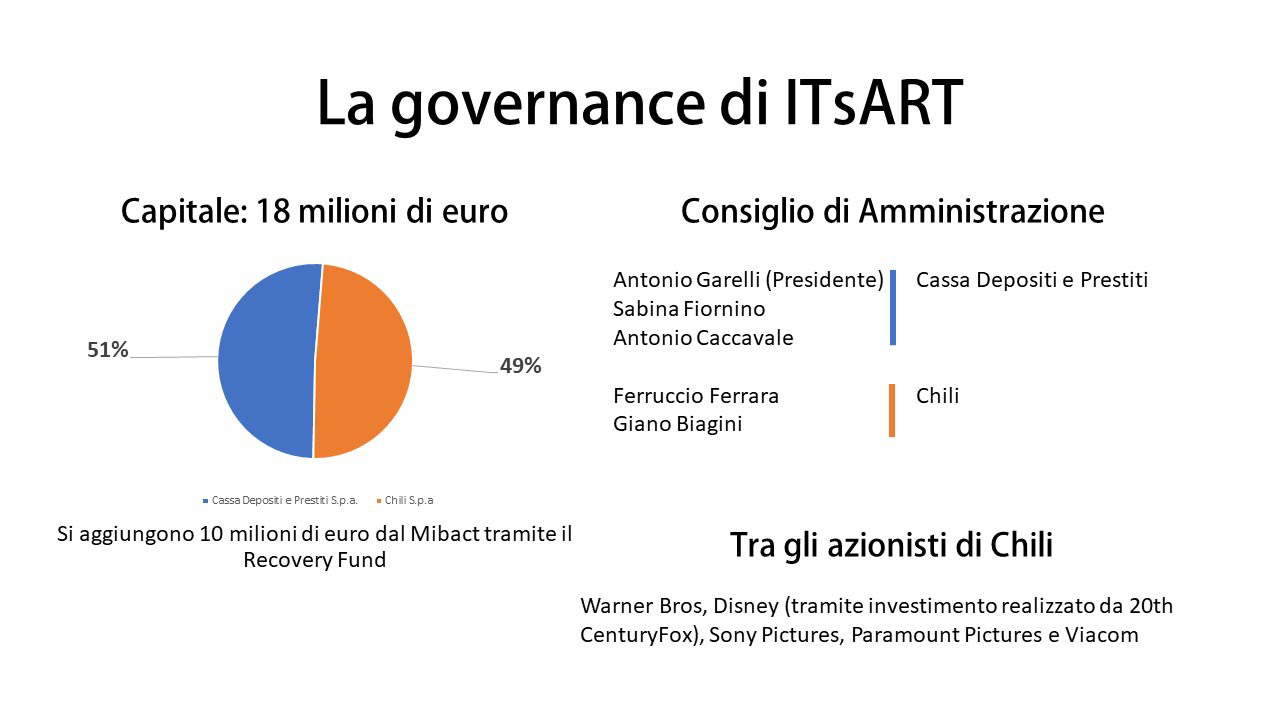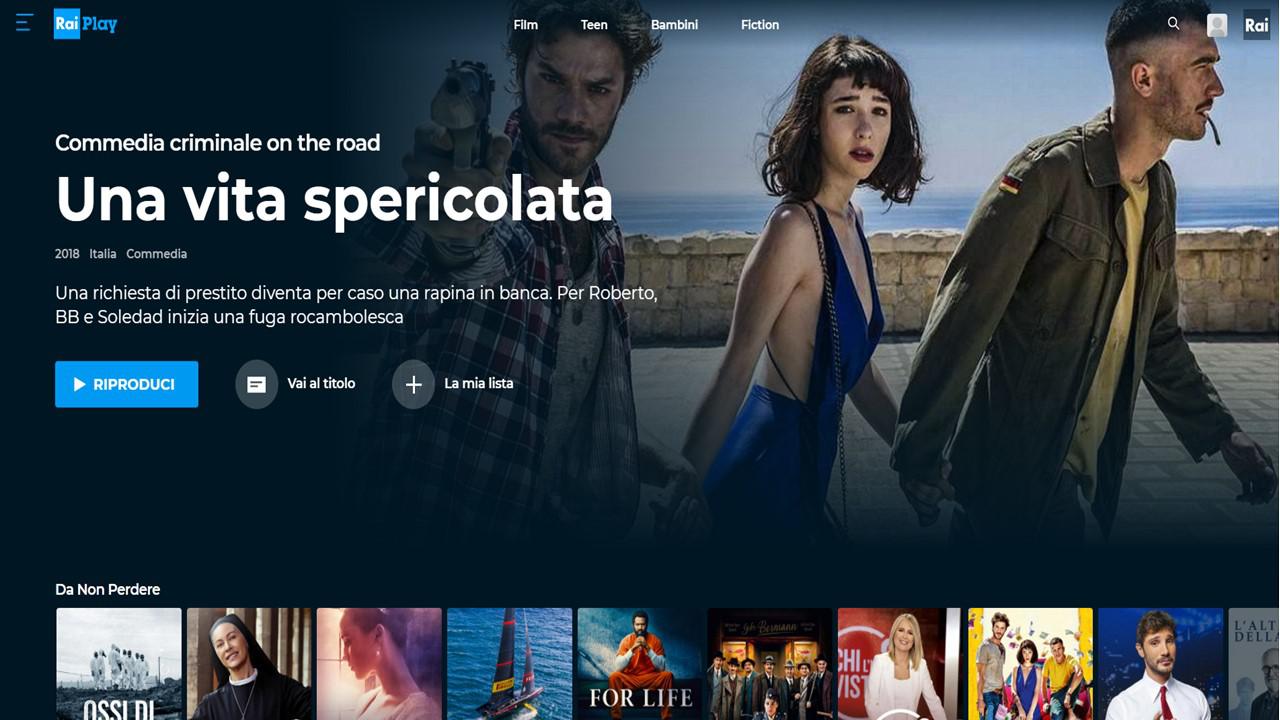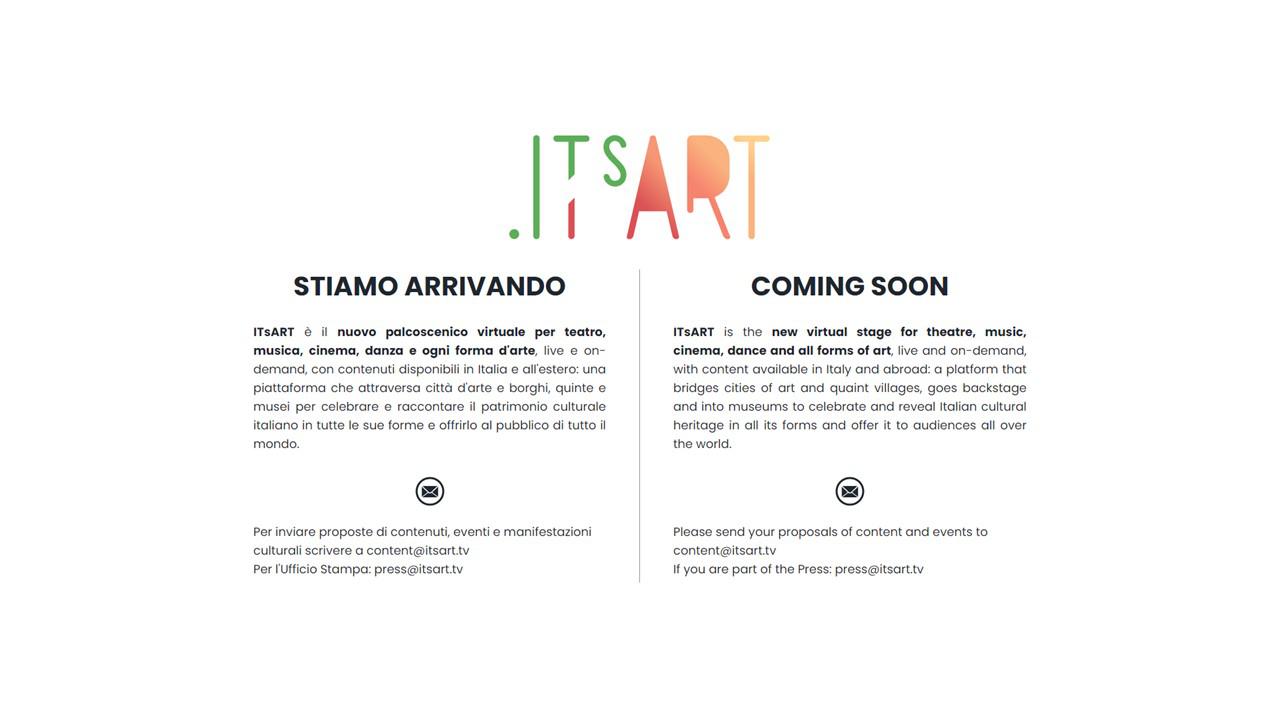Considerations and questions about ITsART, the so-called "Netflix of culture"
While Italians were locked in their homes during the first wave of Covid-19, Minister Franceschini had announced a grandiose project of digital cultural offerings through a TV platform: the so-called Netflix of Culture. The mysterious project has advanced quickly with the closing of an agreement with the Chili platform for content distribution: the new entity will be called ITsART (the cross of “ITaly is ART”). This new service is a collaboration between Chili S.p.a and Cassa Depositi e Prestiti S.p.a. The invested capital amounts to 10 million euros from Cassa Depositi e Prestiti (plus 10 from Mibact with the Recovery Fund) and 9 million euros from Chili. Unfortunately, the lack of official communication has prompted journalists to publish various information on the issue, often denied, but never specified in detail by those directly involved, such as the very choice of Chili as a partner in the project, which at the state of affairs would seem to be a rather arbitrary choice. Thus, a series of questions and considerations arise spontaneously to which it is unlikely to be possible to have answers.
 |
| The governance of ITsART |
How did the idea come about?
During the first months of quarantine due to Covid-19, there is a strong growth of video on demand platforms, particularly with Netflix thanks to +332% more access in the first months of 2020. It is likely that such growth did not go unnoticed by the minister. These data may have led the minister to focus on such an idea, seeing it also as an effective opportunity to accelerate the process of digitization of museums, which has been underway for years. Hence the idea for a “Netflix of Culture” was born.
Some issues.
The minister’s idea is to create a platform that offers content on Italian culture, not only to Italian citizens, but to users around the world. It would be wise to note that local productions are not always appreciated abroad and in some cases vice versa. Can a miniseries like Sampa be successful outside the Italian context? How much can Italian users appreciate a documentary by master Martin Scorsese about a character as closely connected to American culture as Fran Lebowitz?
The minister also stated that the platform will host virtually any content related to Italian culture (concerts, videos about museums, events, documentaries, etc.). However, these are very different products and each entails different issues. For example, will the average opera-loving user prefer to purchase viewing a concert online rather than seeing it live when the epidemic is over? Won’t RAI 5, which offers excellent concerts and shows for free, be a competitor? Finally, how many theaters would be able to recoup production costs for such a niche audience? I imagine it might appeal to a few Italian realities, such as La Scala, San Carlo, La Fenice, and perhaps of these realities not even all the shows could be economically viable. The example of what happened for the streaming of Cavalleria Rusticana at the San Carlo in Naples, with a boom of more than 30,000 tickets (at 1.09 euros each), can only be considered half a success: it represents an exception and not the norm (in Naples they bought the ticket mainly to support the theater more than to see the show) and above all one wonders if it can be considered an economically sustainable formula, with such a revenue.
ITsART would also make up for the lack of a common platform for museum digital content. From this perspective, the project seems very interesting. What will the museums present, however? Let’s forget those live streams of very bad quality or videos made with a shaky cell phone where important Italian museum directors illustrated some exhibits, like a normal guide, in some cases even dressed extremely informally. This kind of content proved unsuitable even in a time of epidemic, with Italians locked in their homes. Therefore, special video content should be produced for the platform. However, how many and which museums have the resources to produce them?
Will it suit the ministry?
If the spirit is to emulate of Netflix, generating significant revenue for the ministry, Chili and the museums and theaters producing content, certainly this operation will prove to be a fiasco. If, on the other hand, the goal is to find economic sustainability, the venture may still prove more difficult than expected. It must be kept in mind that to use the platform there will be no annual subscription, but users will be able to purchase individual content that they choose to see. It will not be easy to make back the expenses with a very large competition. One should not only think of documentaries from platforms such as Netflix or Prime, but also of the free services currently offered by RAI and a growing use of YouTube on modern televisions, thanks to an increasingly simple interface and increasingly technological and demanding users. Another ethical issue then arises: would it not be fair to offer these services free of charge to the user, if the purpose of the ministry was to increase the cultural interest of the viewer in order to integrate him or her more and more into a social context as a citizen? How useful might it be to offer the content free of charge to foreigners in order to entice them to come to Italy in person? These thoughts would deserve to be further explored since the answers are not obvious.
What about RAI?
RAI is not involved in this operation, it would seem because the Chili platform would already be set up for online purchases of individual content. Yet RAI already offers an important on-demand service such as RaiPlay, which could be supplemented with some tricks: one among them, the greater prominence of cultural offerings. It is probably wrong to think that RaiPlay could have become the “Netflix of culture.” In fact, thanks to a cultural offer that RAI can already boast of, enviable in many countries, it could become a unique platform. Currently, one of RaiPlay’s main limitations seems to be its target audience. Looking at the homepage, it is apparent that the platform is aiming at certain audiences in particular. The top menu offers links to content for “movies,” “teens,” “children,” and “dramas.” “Movies” aside, the platform seems to be mainly targeting the very young and the very old, practically excluding the average citizen and even more so those looking for cultural content. The addition of sections such as “history,” “concerts,” and “museums” could, with little, direct users to products with greater educational utility. One wonders if, with these few changes, users would still be more interested in RAI dramas than in watching episodes, perhaps even divided by theme, by Philippe Daverio, Angela’s, Paolo Mieli’s, or Alessandro Barbero’s (who is depopulated on YouTube given his poor availability on official channels)?
 |
| The RaiPlay portal |
Are we sure that distribution is the solution?
We have seen how in Italy there is already a lot of content on different platforms that could be easily combined: YouTube videos of museums, episodes of cultural programs on RaiPlay, classical music concerts on RAI5. The main problem, however, may be another. In the 1980s RAI co-produced cartoons with future Oscar winner Hayao Miyazali, produced documentaries for Geo with Folco Quilici, talked about art on television with Professor Federico Zeri. Wouldn’t it be better to devote these great economic resources to the production of cultural content? Abroad, great masters of documentaries produce extraordinary videos on art, on works, personalities, but also museums. Italy is a country with an extraordinary cultural heritage: why not have the great Italian authors and filmmakers tell about it? Why not have Oscar winner Paolo Sorrentino tell about the National Archaeological Museum in Naples? What the Imperial Forums in Rome are today, couldn’t director Gianfranco Rosi tell the story? Wouldn’t such products have much more impact on Italians and especially foreigners?
 |
| ITsART’s website at the moment |
Conclusion
A reorganization of RaiPlay, in order to focus on cultural offerings as the main offering, would certainly have been a much cheaper and more functional operation for the Ministry. Unfortunately, in Italy it is often not very difficult to reorganize, and for a project spending a lot of money is often perceived as synonymous with quality. Today ITsART is already a reality, equipped with a website with a call addressed to content producers, events and manifestations, in an extremely generic way, so much so that it is worrying. With these premises, the impression is that ITsART may become such a large container, with different types of products, that it will be too dispersive. In any case, without a reformulation of cultural policies towards the production of quality content, it will only be a very expensive way to connect already existing products, with the risk of becoming the next “Very Bello,” a portal that was supposed to boost the country’s tourism image during EXPO2015, instead producing poor results and a waste of public resources.
Warning: the translation into English of the original Italian article was created using automatic tools. We undertake to review all articles, but we do not guarantee the total absence of inaccuracies in the translation due to the program. You can find the original by clicking on the ITA button. If you find any mistake,please contact us.





























